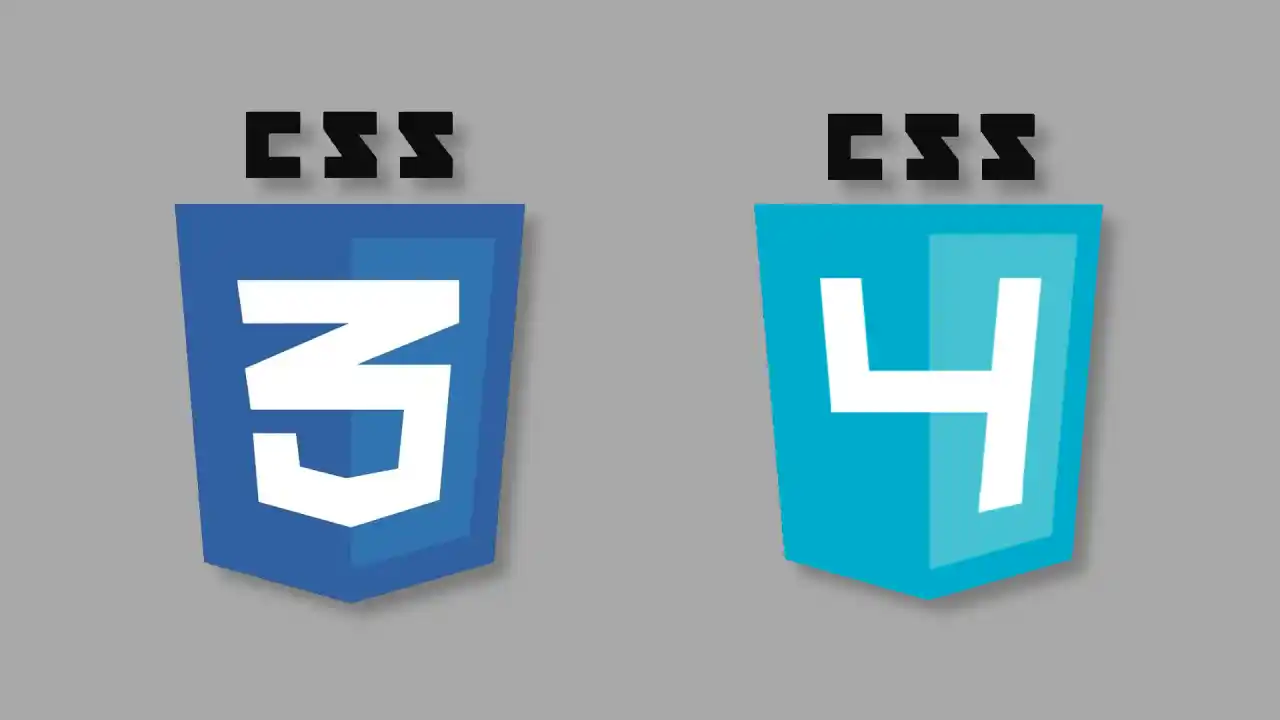Table of Contents
Investigate the upcoming trends in CSS for 2024, focusing on container queries, innovative color models, advancements in CSS variable features, subgrid layout support, variable fonts, the use of :has() and :is() selectors, CSS nesting capabilities, cascading layers, modern CSS frameworks, and the :focus-visible pseudo-class.
In 2024, CSS is advancing with innovative features and trends designed to enhance flexibility, responsiveness, and user experience in web design. Here’s a brief look at what’s on the horizon:
- Container Queries: Revolutionizing responsive design by enabling elements to adjust based on their own dimensions.
- New Color Models (LCH, LAB, HWB): Delivering greater precision and options for creating vibrant, dynamic visuals.
- Enhanced CSS Variables: Facilitating dynamic theming and seamless integration with design systems.
- Subgrid: Elevating CSS Grid layouts to be more versatile and manageable.
- Variable Fonts: Supporting more adaptive and efficient typography solutions.
- :has() and :is() Selectors: Streamlining the process of writing complex CSS rules.
- CSS Nesting: Promoting cleaner, more structured code.
- Cascade Layers: Offering improved control over the organization of style sheets.
- Modern Frameworks and Tools: Including Tailwind CSS, StyleX, and Chakra UI, which accelerate development and promote consistency.
- :focus-visible Pseudo-Class: Enhancing accessibility for users navigating via keyboard.
These updates are set to empower CSS further, enabling developers and designers to build more responsive, accessible, and visually engaging websites with greater efficiency.
Key Advantages
- Increased Reusability: Components can adapt to their context, allowing the same design to be used across various sections without requiring modifications.
- Enhanced Flexibility: Container queries enable websites to adjust not only to overall screen size changes but also to variations in specific sections, providing greater design control.
- Simplified Maintenance: When individual components manage their own adjustments, it becomes easier to maintain the site’s appearance without disrupting other elements.

What is new in CSS4?
Here are some of the latest features in CSS:
- Nesting Rules: Allowing you to organize your styles more cleanly by grouping them logically.
- Container Queries: Enabling sections of your site to adapt seamlessly, no matter where they’re used.
- New Color Functions: Tools like
lab()andlch()provide expanded options for creating precise and dynamic color palettes. - Subgrid: Simplifying the process of creating layouts within grid containers.
- Custom Properties: Making it easier to define and reuse consistent styles across your project.
- Advanced Layout Tools: Utilities like
gapandplace-contentstreamline the process of spacing and aligning elements.
These enhancements bring greater versatility and power to CSS, helping developers design more dynamic and efficient websites.
Understanding the Difference Between CSS3 and CSS4 with Examples
CSS has significantly evolved, with CSS3 introducing revolutionary features and CSS4 refining them further. Let’s explore the key differences between CSS3 and CSS4 with examples to highlight their impact.
1. Selectors and Pseudo-Classes
- CSS3 : Introduced game-changing selectors like
nth-child(),not(), and pseudo-classes such as:hoverand:focus. Usingnth-child()to target specific elements.
/* CSS3 Selector */
ul li:nth-child(2) {
color: blue; /* Styles the second list item */
}- CSS4 : Adds powerful selectors like
:has()(parent selector),:is(), and:where(), making complex styling tasks easier and more intuitive. Using:has()for a parent selector.
/* CSS4 Selector */
div:has(h1) {
border: 2px solid red; /* Styles divs that contain an <h1> */
}
2. Responsive Design Enhancements
- CSS3: Media queries revolutionized responsive design by enabling styles to change based on screen size.Using media queries for responsive design.
/* CSS3 Media Query */
@media (max-width: 600px) {
body {
background-color: lightgray;
}
}
- CSS4: Takes responsiveness further with container queries, which allow elements to adjust based on their own container size instead of just the viewport. Using container queries for component-based responsiveness.
/* CSS4 Container Query */
@container (min-width: 300px) {
.card {
font-size: 1.2rem;
}
}
3. Color Systems
- CSS3: Provided foundational color models like RGB, HSL, and named colors. Defining colors with HSL.
/* CSS3 Color System */
div {
background-color: hsl(120, 50%, 50%);
}
- CSS4: Introduces advanced color systems such as
lab(),lch(), andhwb(), offering more precise and vibrant color options for modern designs.Using the newlch()color system for enhanced vibrancy.
/* CSS4 Color System */
div {
background-color: lch(75% 50 200);
}
4. Typography
- CSS3: Focused on @font-face and basic font-related properties to enable custom typography.Implementing a custom font using
@font-face.
/* CSS3 Typography */
@font-face {
font-family: 'CustomFont';
src: url('customfont.woff');
}
body {
font-family: 'CustomFont', sans-serif;
}
- CSS4: Enhances typography with variable fonts, allowing smoother and more adaptive text rendering, which improves both performance and aesthetics.Leveraging variable fonts for flexibility.
/* CSS4 Variable Fonts */
h1 {
font-variation-settings: "wght" 700;
}
5. Grid and Layout Systems
- CSS3: Introduced CSS Grid and Flexbox, providing developers with robust tools for layout management.Creating a basic grid layout.
/* CSS3 Grid */
.container {
display: grid;
grid-template-columns: repeat(3, 1fr);
}
- CSS4: Enhances CSS Grid with Subgrid, enabling better alignment and control for nested grid structures.Using Subgrid for nested layouts.
/* CSS4 Subgrid */
.grid {
display: grid;
grid-template-columns: 1fr 2fr;
}
.item {
display: subgrid;
grid-template-columns: repeat(2, 1fr);
}
6. Cascade and Style Management
- CSS3: Relied on the traditional cascade mechanism and specificity rules.Managing specificity with inline styles or
!important.
/* CSS3 Cascade Management */
p {
color: black !important;
}
- CSS4: Introduces cascade layers, which improve stylesheet organization and provide better control over priority in complex projects.Using cascade layers for better organization.
/* CSS4 Cascade Layers */
@layer base {
h1 {
color: blue;
}
}
@layer overrides {
h1 {
color: green;
}
}
7. Interactivity and Animations
- CSS3: Introduced keyframes and transitions for basic animations.
/* CSS3 Animation */
@keyframes slide {
from {
transform: translateX(0);
}
to {
transform: translateX(100px);
}
}
div {
animation: slide 2s infinite;
}
- CSS4: Expands on this with scroll-driven animations, enabling dynamic effects triggered by user scrolling.
/* CSS4 Scroll-Driven Animation */
@scroll-timeline slide {
scroll-source: auto;
scroll-range: 0% 100%;
}
div {
animation-timeline: slide;
animation: fade-in 1s linear;
}
8. Code Organization
- CSS3: Relied on SCSS or other preprocessors for nesting and cleaner syntax.
/* CSS3 Preprocessor (SCSS) */
nav {
ul {
li {
color: red;
}
}
}
- CSS4: Implements CSS Nesting natively, making code more readable and maintainable without the need for preprocessors.
/* CSS4 Native Nesting */
nav {
ul {
li {
color: red;
}
}
}
The Rise of CSS :has() and :is() Selectors
The pseudo-classes :has() and :is() are exciting additions to CSS, making it easier to target elements on a webpage. As browser support expands in 2024, these features promise to simplify the way we write CSS.
How :has() Works
The :has() pseudo-class allows you to select parent elements that contain specific child elements. This is transformative because it eliminates the need for complex selectors to target parent elements. Here’s a simple example:
/* Select article elements containing a child with the class 'highlight' */
article:has(.highlight) {
border: 1px solid #fee599;
}Before :has(), achieving this would require more convoluted approaches, leading to less maintainable code.
Practical Applications of :has()
Here are some ways :has() can be utilized:
- Styling parent containers differently based on the content they hold.
- Dynamically showing or hiding elements depending on their children.
- Adjusting layouts when specific elements are present within a container.
This functionality reduces the reliance on JavaScript for tasks like these, making CSS more powerful.
How :is() Works
The :is() pseudo-class allows you to apply a single CSS rule to multiple elements simultaneously. You simply list the elements in parentheses, separated by commas.
/* Apply the same styles to buttons and custom inputs */
:is(button, .custom-input) {
border-radius: 4px;
padding: 8px 12px;
}This approach saves time and effort by avoiding repetitive rules for different elements.
Practical Applications of :is()
The :is() pseudo-class is particularly useful for:
- Applying consistent styles to multiple elements without redundancy.
- Preventing issues with overly specific selectors.
- Reducing the overall size and complexity of your CSS code.
The Significance of Cascade Layers
Cascade layers provide a method for web developers to organize their CSS styles into distinct categories. This approach enhances control over which styles take precedence and simplifies managing styles in larger projects.
How Cascade Layers Function
The @layer rule lets you define and order your layers like this:
@layer utilities, components;You can then assign specific stylesheets to these layers:
@import "utilities.css" layer(utilities);
@import "buttons.css" layer(components); The sequence in which you define the layers determines the order of style application. Styles from layers declared later can override those from earlier layers.
Advantages of Using Cascade Layers:
- Improved Organization: Grouping styles logically makes it easier to locate and update them when needed.
- Greater Control: Instead of relying on complex cascade rules, you can simply decide which layer takes priority.
- Reduced Need for
!important: With better control over style precedence, the reliance on!importantto enforce styles diminishes. - Better Collaboration: Teams can establish a consistent structure for their layers, making it easier to work together effectively.
Cascade layers offer a structured and efficient way to manage CSS, making it easier to maintain, scale, and collaborate on projects. They are an essential tool for modern web development.
Conclusion
As we move into 2024, the evolution of CSS is opening up incredible possibilities for crafting websites that are not only visually stunning but also highly functional. From groundbreaking features like container queries, which enable layouts to respond more intuitively to different component sizes, to advanced color systems like LAB and LCH for creating vibrant and precise designs, CSS is becoming more versatile and user-friendly than ever.
Variable fonts are another transformative feature, allowing for responsive typography that adapts seamlessly to various contexts. These tools are empowering developers to push creative boundaries while making their code cleaner and more efficient.
While these cutting-edge features are thrilling, it’s essential to balance innovation with inclusivity. Websites must remain accessible and functional across all devices and browsers, ensuring a seamless experience for every user. Thankfully, tools like native CSS nesting simplify writing structured code, and the @supports rule allows developers to gracefully implement new features while providing fallbacks for older browsers.
These advancements also mean we can focus more on enhancing user experiences. From subtle animations to adaptive layouts, the new capabilities of CSS are paving the way for interactive, immersive, and accessible designs. Imagine websites that not only look gorgeous but also feel alive and intuitive.





